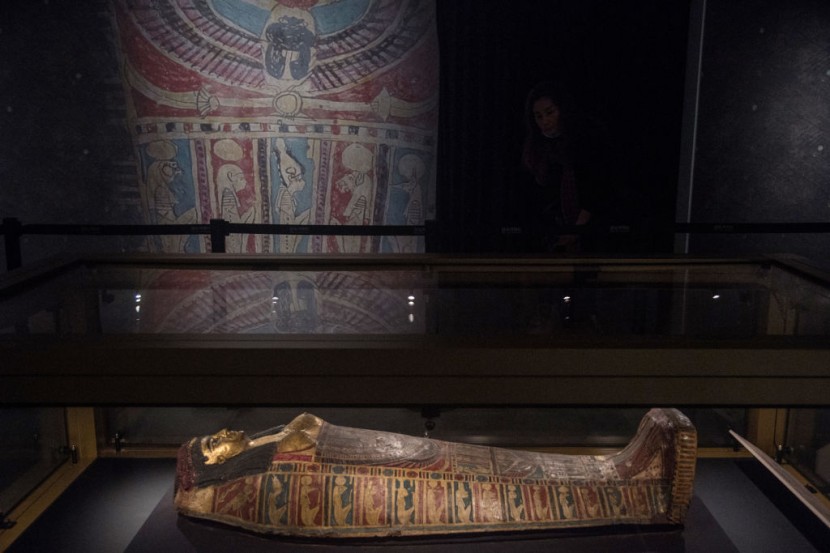
The female mummy Shep-en-Isis is the latest of relics that scientists have investigated to give a face to a long-dead Egyptian from 610 BC.
In Switzerland, researchers reconstructed the famous Schepenese mummy with a CT scan and morphological data taken for the remains. The scan results were surprising and showed how Shep-en-Isis looked when she was alive.
Famous mummy's face reconstructed after more than two millennia
What the CT scan revealed was the facial reconstruction of Shep-en-Isis. She was attractive and possessed deep brown eyes with protruding upper teeth.
This mummy was discovered way back in 1819 at the Deir el-Bahari, a group of mortuary temples and tombs found in the Nile's west bank. Later the remains were sent to Switzerland in 1820, reported the Daily Mail.
Her mummy is currently kept in the Swiss City of St. Gallen, where the São Galo Abbey Library is found. The coffin shows that she was a member of a wealthy upper-class family. She was also educated in the norms of 7th century BC Egypt.
More evidence shows that her father is a Theban priest, living the late period of the 26th dynasty as the Nile Kingdom waned. She died in 610 BC, based on data. Questions like what Shep-en-Isis's husband's profession and if she had children of her own are difficult to answer.
Sources say the project was done by the FAPAB Research Center in Sicily and Flinders University in Australia. Working with a 3-D Brazilian designer, Cicero Moraes, who recreated the face, cited Eminetra.
Moraes has distinctions in several facial reconstructions of historical figures like Jesus Christ and Mary Magdalene, adding the female mummy Shep-en-Isis to his credits.
Abbey Library of Saint Gall had the work done, and it has already owned the computerized tomography for years.
Who is Schepenese?
According to specialists, she was attractive when alive, as indicated by the harmonious and well-proportioned features. Reports in the 1820s showed that the examination found that the teeth were intact, which was prominent during the reconstruction.
Everything from the tissue, eyes, skin and other prominent details on the nose was built up to rediscover the mummy's face, noted Science Times.
Found in a family tomb of the mortuary temple of Pharaoh Hatshepsut inside the Deir el-Bahari temple. She was with her father, Pa-es-tjenfi, who is located in Berlin.
Combined expertise results in mummy's face
Dr. Michael Habicht from Flinders University spoke to Aventuras na História and said that based on Schepenese's age and coffin style, she was born in 650 BC and passed away between 620 and 610 BC.
The ear was intact, so it can be guessed how it looked, without assuming from just skeletal remains of a generic ear. Some details are pure guesswork for Schepenese, like the right eye color or her skin's living complexion. Experts use defaulted characteristics from native Egyptians, like brown eyes and olive skin color.
Team members omitted jewels, clothes, and wigs from the final face reconstructed, which are not factual but guesswork.
Scientists state that the facial representation is based on forensics and the anatomical clues, how they used the CT scan to get to the final image.
A female mummy Shep-en-Isis has been given a face after death for centuries, and experts accurately combine several disciplines to reconstruct a face from history like Ancient Egypt.
Related Article: Ancient Egypt's Legendary Temple of the Sun Discovered After 4,500 Years Hidden Under the Sands
© 2026 HNGN, All rights reserved. Do not reproduce without permission.








